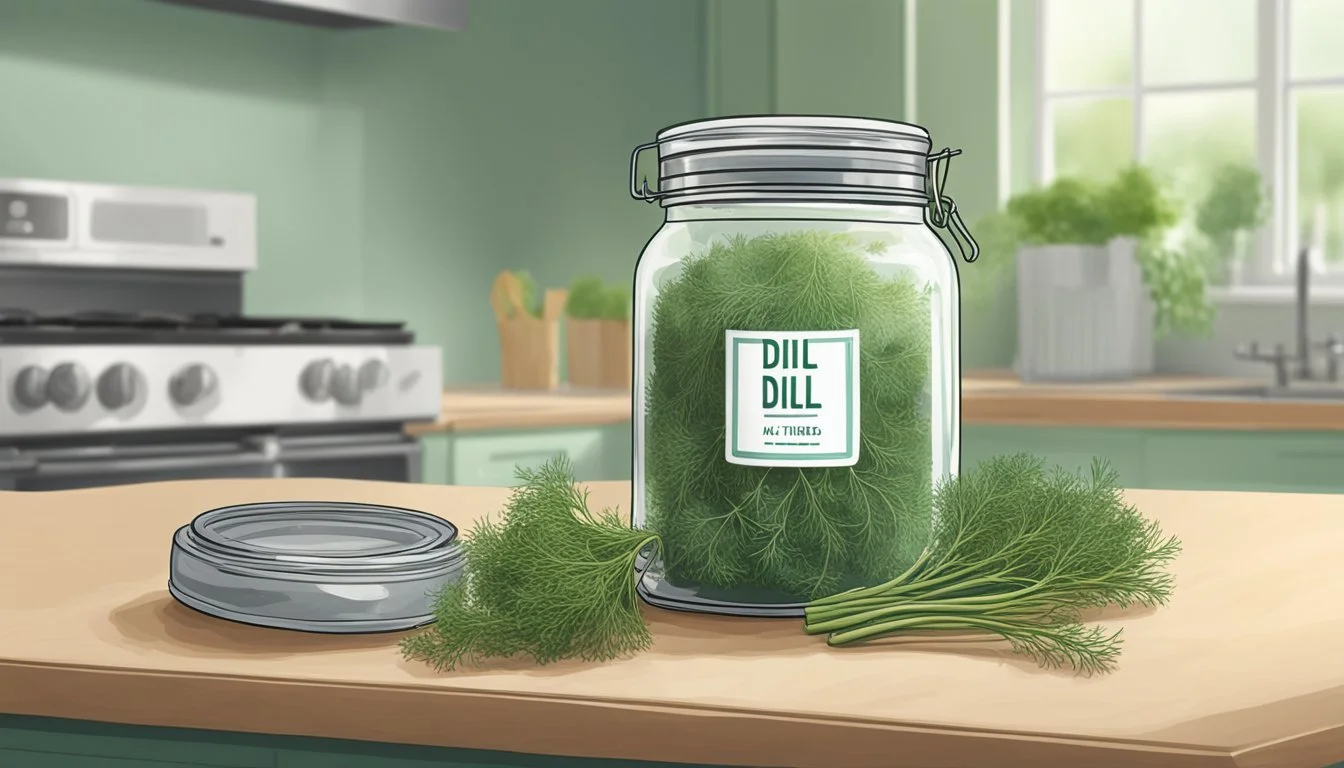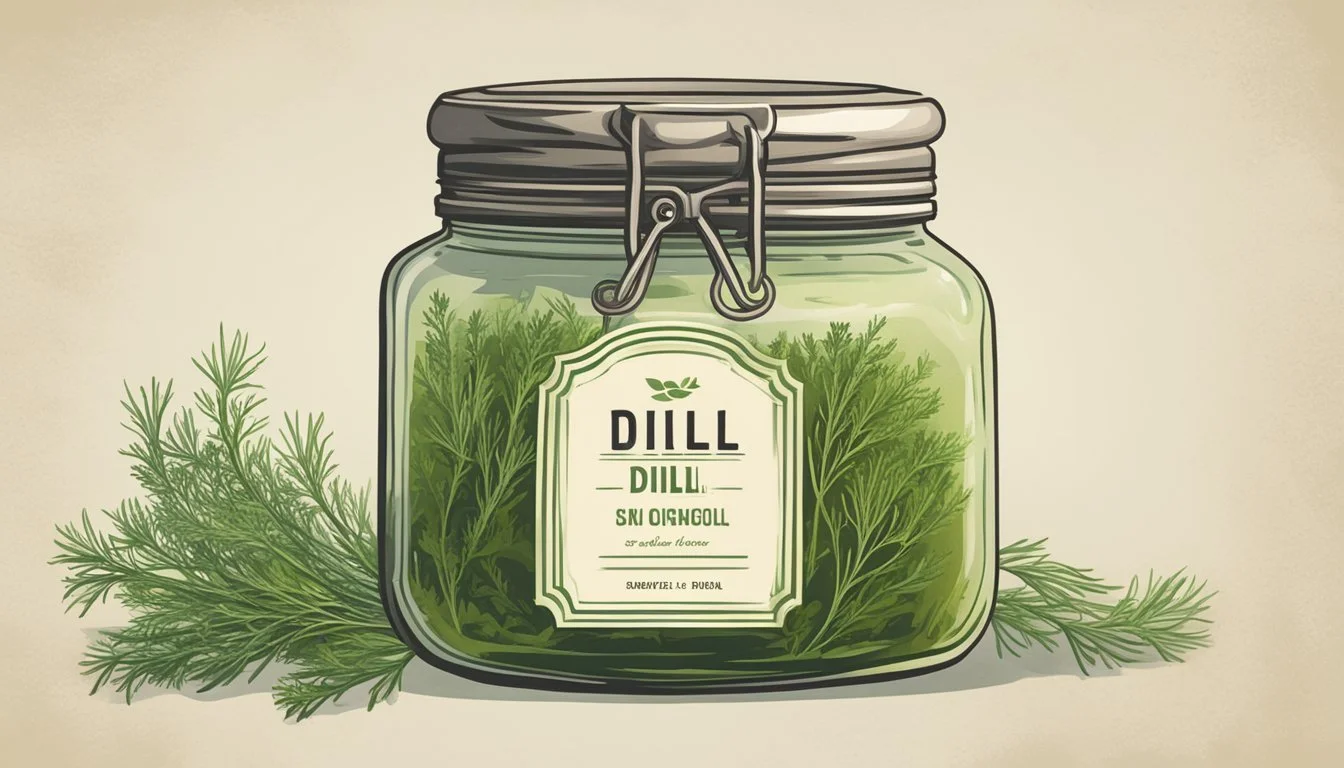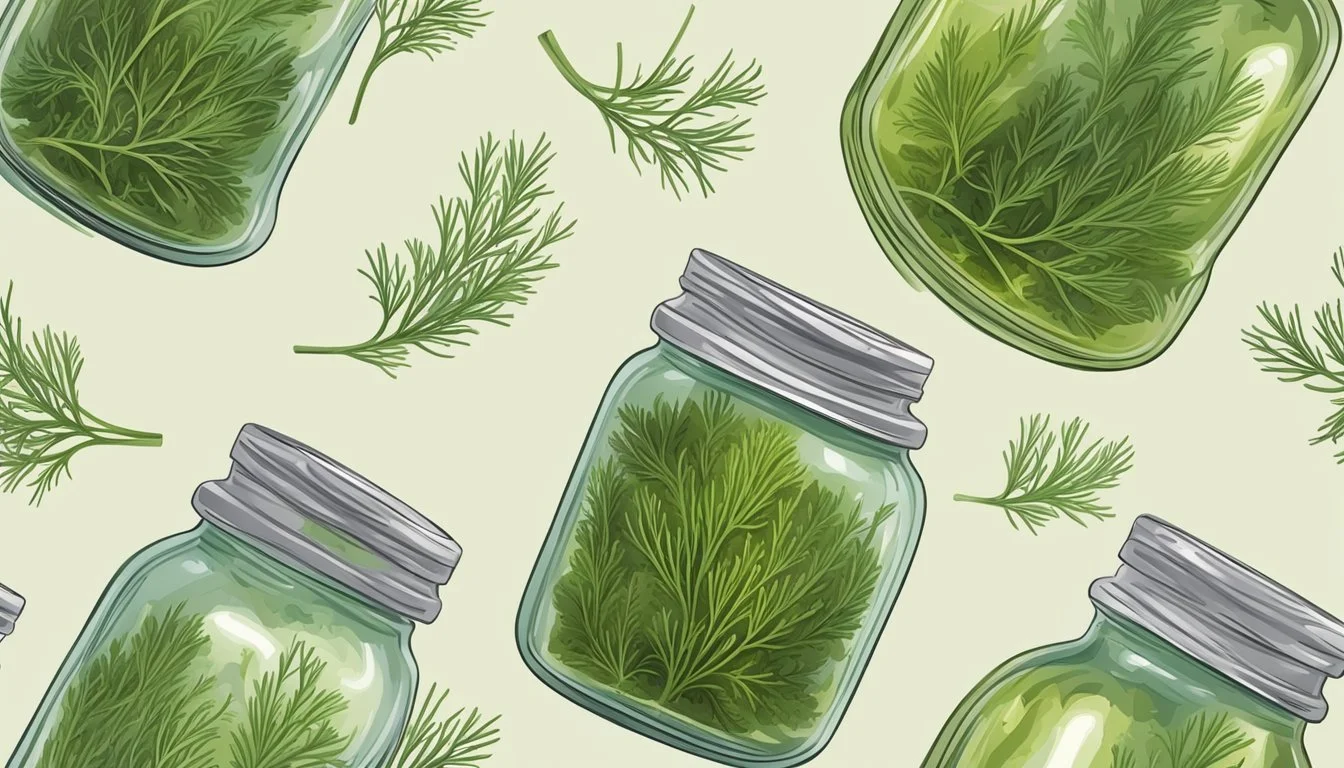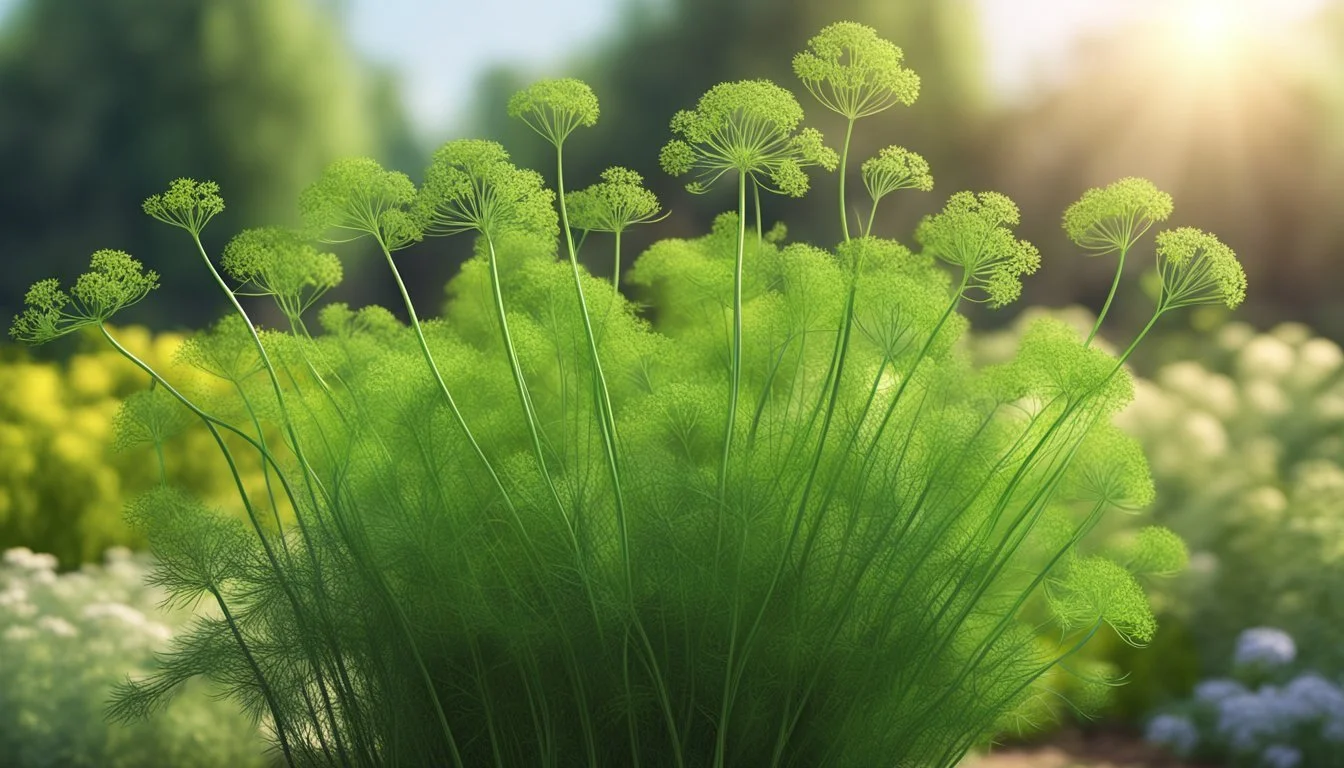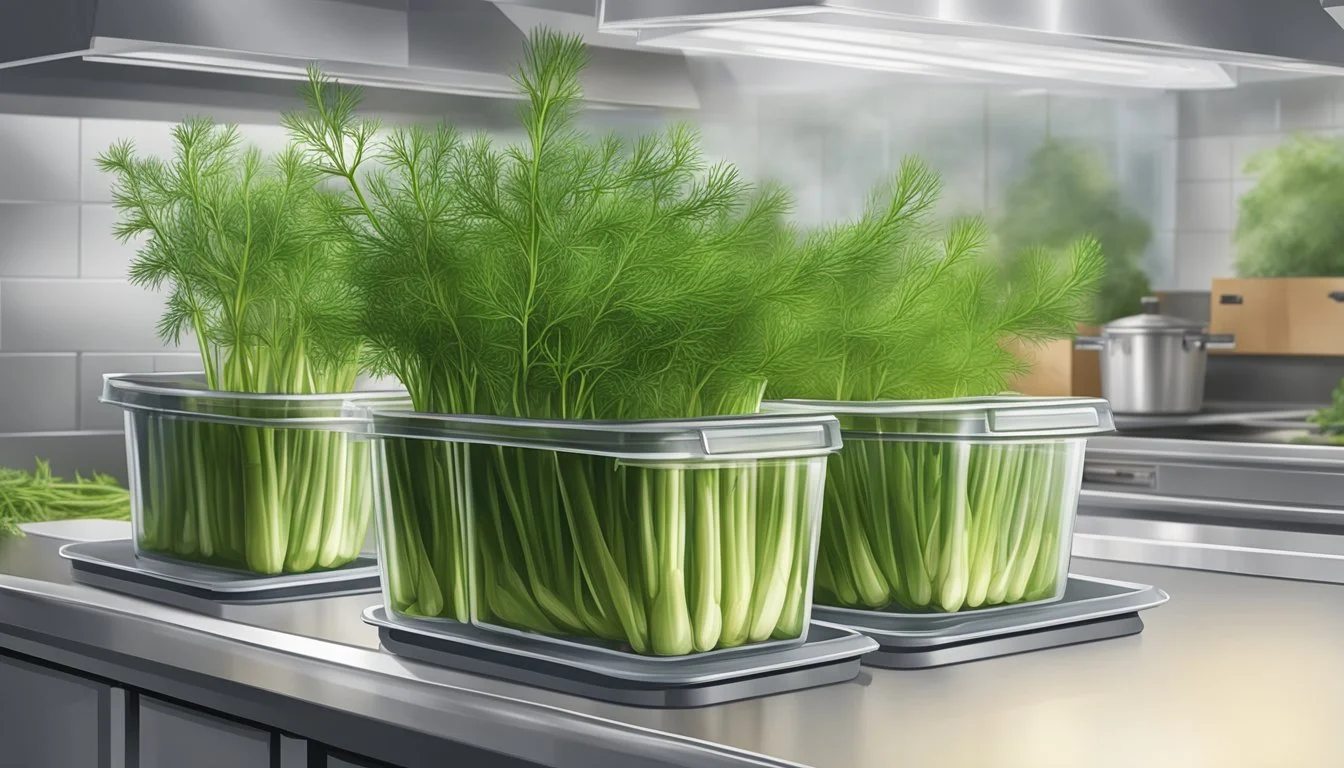Does Dill Go Bad?
Understanding the Shelf Life of This Herb
Dill, known for its delicate feathery leaves and distinctive aroma, is an herb that adds a fresh, slightly anise-like flavor to dishes. Commonly used in kitchens and found in a variety of recipes, it's important to know how to tell if dill is past its prime. Dill can go bad, and its shelf life depends on how it is stored. Fresh dill is typically more perishable than dried, with a refrigerator life that can last up to a week when properly stored.
The signs that dill has gone bad are usually evident. Discoloration, loss of the vibrant green hue, a wilted texture, and a diminished aroma are clear indicators. To extend its shelf life, dill can be frozen, which preserves its flavor and makes it convenient to use later on. Ground and whole dried dill have a significantly longer lifespan than fresh, retaining their quality for several months to a few years respectively, as long as they are stored in a cool, dry place away from direct sunlight.
Understanding the lifespan and proper storage methods for dill ensures that this aromatic herb can be enjoyed at its best quality, contributing its characteristic flavor to a myriad of dishes.
Understanding Dill
Dill is a versatile herb that comes in both fresh and dried forms, known for its distinctive flavor and nutritional properties.
Dill: A Profile
Dill, an annual herb in the Apiaceae family, is characterized by its feathery green leaves and sweet, aromatic flavor. It's used in various cuisines worldwide, from pickling processes to seasoning soups, salads, and more. Fresh dill has a delicate structure and vibrant color that signify its freshness.
Fresh Dill vs Dried Dill
Fresh Dill: This form of dill is known for its bright and pungent flavor. It is highly perishable and can last about 1-2 weeks when stored properly in the refrigerator. Fresh dill should be crisp, with a vibrant green color, and stand upright when placed in a container with water.
Dried Dill: Dried dill is less potent in flavor compared to its fresh counterpart, but it has a much longer shelf life. If kept in a cool, dry place, dried dill can last for several months without losing much of its flavor potency.
Health Benefits of Dill
Dill is not only appreciated for its flavor but also for its health benefits. It is a good source of antioxidants, which help protect the body from oxidative stress. A 100-gram serving of dill can boost vitamin A and vitamin C intake, supporting healthy vision, skin, immune function, growth, and reproductive health.
The distinction between fresh and dried dill as it pertains to shelf life, potency, and preferred culinary uses is a reflection of the herb's versatile nature in cooking and nutrition.
Storing Dill
Proper storage methods can substantially extend the shelf life of dill, ensuring that it retains its flavor and freshness. Whether dealing with fresh dill or dried, understanding the right storage techniques is crucial for maintaining the herb's best quality.
General Storage Tips
For optimal preservation, one should place fresh dill in a breathable container within the refrigerator. Containers might include plastic bags or airtight containers, but they should avoid trapping moisture which could hasten spoilage. Conversely, dried dill should be stored in a dark place, such as a pantry or cupboard, away from direct sunlight to maintain its potency over time.
Extending Fresh Dill's Shelf Life
The shelf life of fresh dill depends greatly on how it’s stored. Under refrigeration, fresh dill typically lasts up to 1 week. To extend its freshness, one should wrap the dill in a damp paper towel and place it inside an airtight container or sealable plastic bag before storing it in the refrigerator's crisper drawer.
Freezing Dill
Freezing is an excellent way to preserve dill long-term while keeping its flavor intact. One can freeze dill by finely chopping it and packing it into ice cube trays, topped with water or olive oil, and then wrapping the tray with plastic wrap. After freezing, transfer the cubes into freezer bags. Frozen dill can last up to 6-12 months for best quality.
Proper Storage of Dried Dill
Dried dill should be kept in an airtight container and placed in a cool, dark place to prevent it from losing its flavor. When properly stored, dried dill can retain potency for years but is generally best used within a year. Avoiding exposure to heat, light, and moisture ensures that dried dill remains aromatic and effective.
Identifying Spoilage
When dill begins to spoil, it exhibits clear signs that are easily recognizable. Paying attention to these visual and olfactory cues is important for maintaining food safety and avoiding the consumption of spoiled herbs.
Signs of Spoiled Dill
Discoloration: Fresh dill should have a vibrant green hue. Yellowing or browning leaves indicate that the dill is no longer fresh.
Texture: If dill leaves appear wilted, slimy, or excessively dry, they've likely gone bad.
Smell: Dill has a distinct, aromatic smell when fresh. A lack of scent or an off-odor can signal spoilage.
Mold: Presence of mold, which may appear as white, black, or green fuzzy spots, confirms that the dill is spoiled and should not be consumed.
Food Safety and Spoiled Herbs
Mold: Consumption of moldy herbs can potentially lead to foodborne illnesses.
Spoilage: Using spoiled dill can compromise the taste and safety of a dish.
Storage: Proper storage in airtight containers in the refrigerator can extend dill's freshness.
Visibility: When inspecting herbs for spoilage, good lighting helps to spot subtle signs of decay.
It's important to discard any dill that shows these signs of spoilage to ensure meals are both safe to consume and of the best quality.
Culinary Uses of Dill
Dill is a versatile herb that adds a fresh, bracing flavor to a variety of dishes, both as a key ingredient and for seasoning. With its unique taste, it complements many recipes and pairs well with other herbs and spices.
Incorporating Dill into Recipes
Dill can be chopped and added to numerous dishes, including soups, dips, and salads. It contributes a distinctive taste that harmonizes especially well with seafood and vegetables. For example, dill is often included in recipes for dill pickles, lending them their characteristic flavor. Fresh dill works best when added at the end of cooking to preserve its delicate flavor, while dried dill can be integrated earlier in the cooking process.
Using dill in baking is less common but can be impactful; it pairs well with breads that incorporate vegetables like squash. Dill's flavor is also a natural fit for pickling where it's a key component in creating the classic taste of various pickled vegetables.
Pairing Dill with Other Herbs and Spices
Dill pairs well with many other herbs and spices, allowing for the creation of complex seasoning blends. When combining dill with other flavors, one should note that it complements sweeter spices as well as savory ones.
Peppercorns: They enhance the slightly sharp edge of dill.
Cumin: Brings out the earthy tones in dill.
Paprika and Chili Powder: Can add a gentle warmth that underscores dill's tangy profile.
For a more Mediterranean flair, dill can be combined with basil, oregano, and rosemary. Coriander seeds may also be added to the mix for a slightly citrusy note. These combinations can be adjusted to match the profile of a wide range of dishes, always considering how dill’s flavor might evolve upon cooking.
Maintaining Dill Plants
To ensure dill plants thrive in a garden setting, attention to their specific needs is crucial. From proper soil preparation to timely harvesting, each step can influence the health and productivity of dill plants.
Growing Dill at Home
When one opts to grow dill at home, they must provide an environment conducive to its growth. Dill plants perform best in well-drained, light, and loamy soils, with the soil pH level slightly acidic to neutral, roughly between 6.0 to 6.5.
Planting: It's vital to sow dill seeds about ¼-inch deep. Seedlings typically emerge after 10 to 14 days. If the seedlings appear crowded, thinning them to about 10 to 12 inches apart ensures proper growth.
Watering: Dill plants require consistent moisture. Water deeply when the top inch of soil feels dry to the touch, but avoid overwatering to prevent root rot. To maintain soil moisture:
Water at the base of the plant to target roots directly.
Employ mulching to retain soil moisture and regulate temperature.
Light: Dill loves sunlight, requiring a full sun location for robust growth.
Nutrition: While dill plants are not heavy feeders, an occasional balanced fertilizer can promote health, especially in soils of poorer quality.
By being diligent in these care aspects, gardeners can foster dill plants that are less likely to go bad and more prone to provide a plentiful harvest.
Maximizing Dill Shelf Life in Commercial Settings
Ensuring that dill retains its freshness and flavor in commercial settings is pivotal. Clear labeling and strategic organization are key practices for longevity.
Ensure Best By Dates Are Clear
In commercial settings, it's crucial that best by dates for dill are clear and visible. This practice not only complies with food safety regulations but also aids in maintaining product quality. To facilitate this:
Use labels that are resistant to moisture and fading.
Implement a system to boldly denote the best by date on every package of dill, be it dried or fresh.
Organizing Spices for Freshness
Proper organization is vital to maintaining the freshness of dill in commercial spice storage areas. Methods to organize spices, particularly dill, should include:
Alphabetical or use-by-date sorting on the spice rack or in the spice drawer to ensure older stock is used first.
Segregation of fresh and dried dill to prevent cross-contamination and flavor transfer.
FAQs about Dill
Dill is a culinary herb that is treasured for its fragrant aroma and vibrant green hue. With proper storage, one can extend the shelf life of this delicate herb. The FAQs below provide insight into how one can best use and store dill to maintain its freshness.
Common Questions about Dill and Its Uses
How does one identify if dill has gone bad?
She looks for discoloration and wilting. If the dill has yellow or brown leaves or appears slimy, these are clear indicators it has spoiled. A fresh and potent aroma is a good sign; a lack of scent or an off smell suggests the dill is past its prime.What are the best practices to store dill and extend its shelf life?
To store dill effectively, one can:In the fridge: Wrap it in a damp paper towel and place it in a plastic bag before refrigerating.
In water: Stand the stems upright in a glass of water, changing the water every couple of days.
In the freezer: Dill can be frozen in airtight containers or freezer bags for up to six months.
It is vital to keep dill in a neutral to slightly acidic environment to maintain its freshness.
Can dill be preserved in salt?
Yes, dill can be layered with salt in an airtight container and stored in the fridge. The salt draws out moisture and helps preserve the dill.How long does fresh dill typically last when stored properly?
Fresh dill typically lasts about one to two weeks in the refrigerator when stored properly. However, if preserved in salt or frozen, it can last significantly longer.
By understanding the signs of deterioration and employing proper storage techniques, the consumer ensures that their dill remains a delightful addition to many culinary endeavors.

